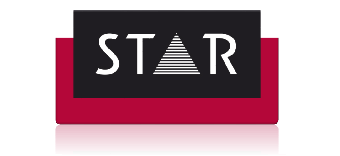Machine Translation
Also known as automatic translation or MT.
Machine translation (MT) also called automatic translation, is a translation process where a computer program completes the process of translation without any human intervention. The computer system uses algorithms to determine the meaning of the original sentence and then creates a translated sentence in the new language.
Why use Machine Translation?
It is helpful for quick translation; however, machine translation cannot replace qualified human translators. If the translation must be of a high quality standard, the job has to be done by a human translator. Most MT systems would be called gisting engines. They allow you get the gist of a text, roughly what is being said. The problem with machine translation is that it can never understand what is being written so can generate some pretty awful mistakes. An example of a phrase that MT would find difficult to translate might be the following text… “Single Colour Ink Cartridge”
This phrase can have multiple meanings depending on the context. It can mean…
- a cartridge with a single colour. A red one, a blue one, a green one
- a cartridge that contains all colours. This printer takes a single colour ink cartridge. Only a professional translator can understand that the context is missing and important. Some companies use MT for cheap translation. The use of MT is a fast way to get a translation and can increase productivity of translators who may use the MT as a rough draft, i.e. pre-translation. They can then edit the MT translation afterwards. There are plenty of MT platforms, but the most famous machine translation platforms on the Internet are: Google Translate, Yahoo!, Babelfish, Reverso, and Bing Translator
Another interesting example is the sentence “sharks swim in schools“. Type this into any of the current machine translation engines and translate it into French. All our tests show the example same result – literally that sharks swim in “schools” = “écoles”, where children go to learn. So lots of scared children and only bad translation.
Free isn’t Free
The old motto still holds true that anything free comes with a price. If you’d like to read more about free translation and our advice on getting the most from it visit our Free Translation Resources.
Even the MT providers reckon that MT translations do not deliver superior quality: “Even today’s most sophisticated software, however, doesn’t approach the fluency of a native speaker or possess the skill of a professional translator. Automatic translation is very difficult, as the meaning of words depends on the context in which they’re used. While we are working on the problem, it may be some time before anyone can offer human quality translations.”
The three stages of the MT process:
- Pre-editing work: the text has to be adapted for the machine to avoid typical ‘mistakes’ from the machine. The grammar and vocabulary have to be simplified to reduce complexity and possible ambiguities. That is called ‘controlled language’
- Translation by the machine engine itself
- Post-editing work: even if the text has been pre-edited, it needs to be revised to produce an acceptable translation. Because of the structure of the MT produced sentences, even when human revised, the translation will not be the same standard as a human translation

Advantages and Disadvantages of MT
- Advantages
- Rapidity: MT is faster than human translation
- Universal: unlike professional translators, the machine is not specialized in a specific field
- Free: the aforementioned platforms are free
- Disadvantages
- Mistranslations and non-translations: lots of misunderstanding; search the Web for bad translation
- Grammar and syntax mistakes
- Lower quality
Visit Wikipedia for more information on Machine Translation. See Google Support documents on Google Translate.
Read more:
